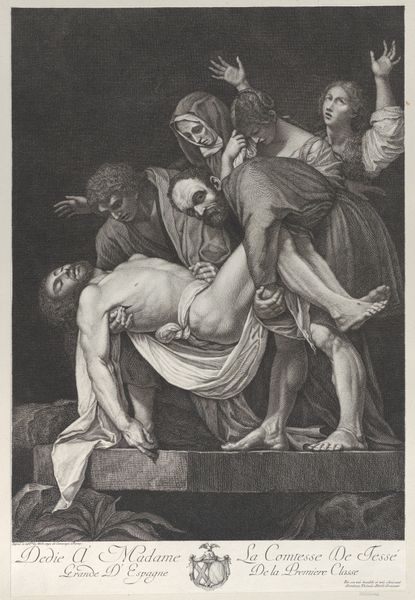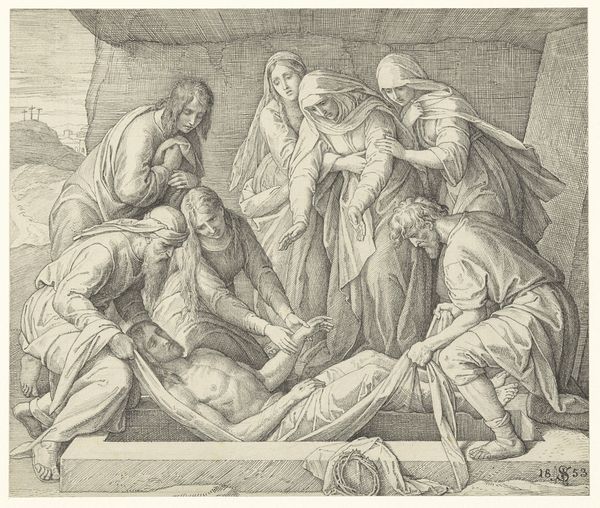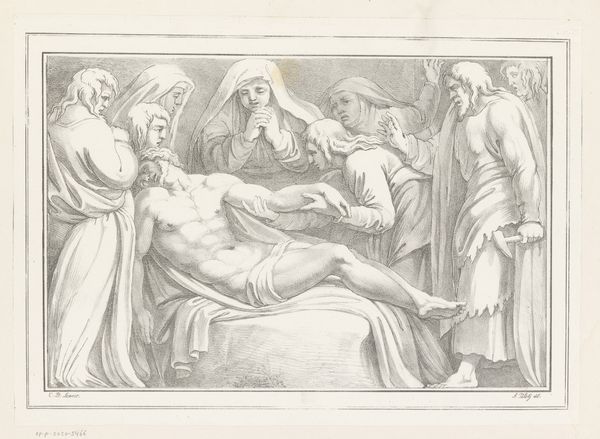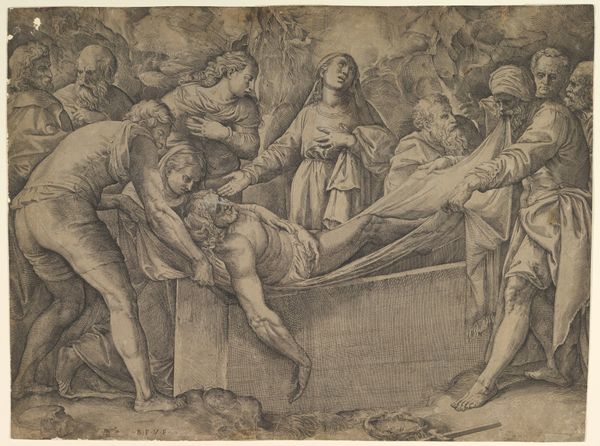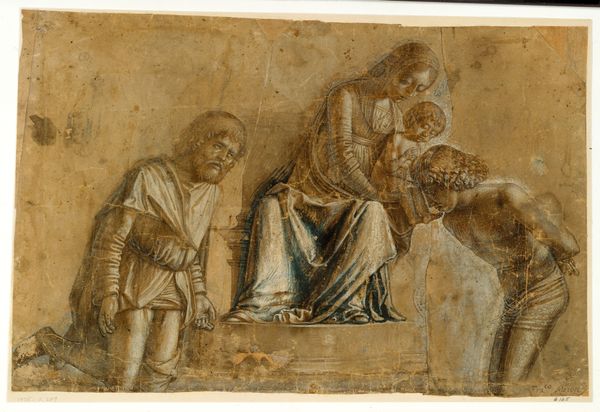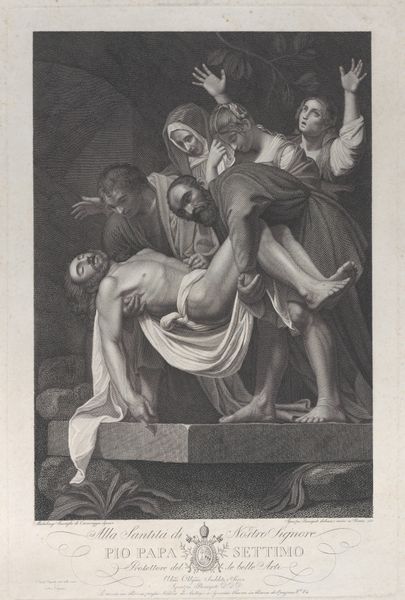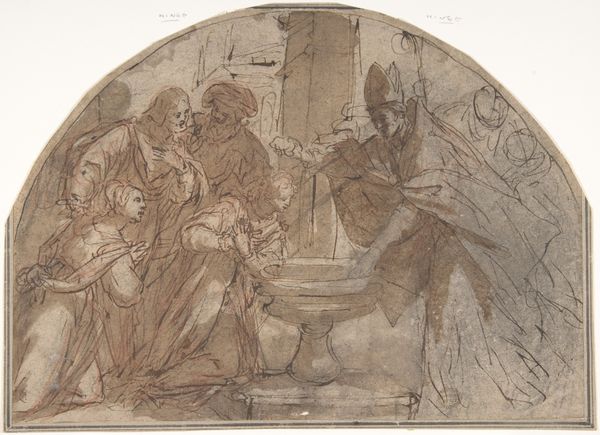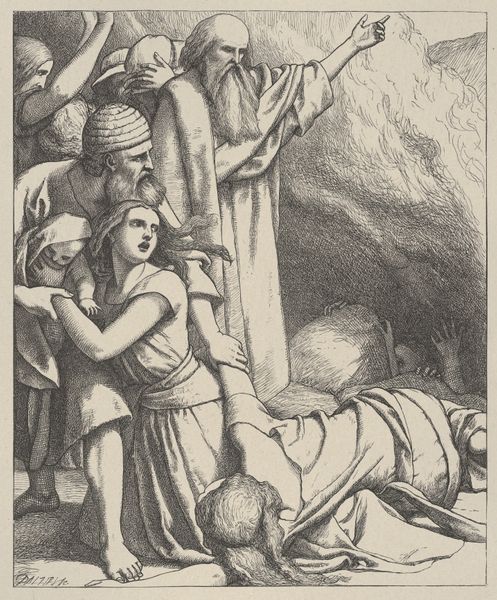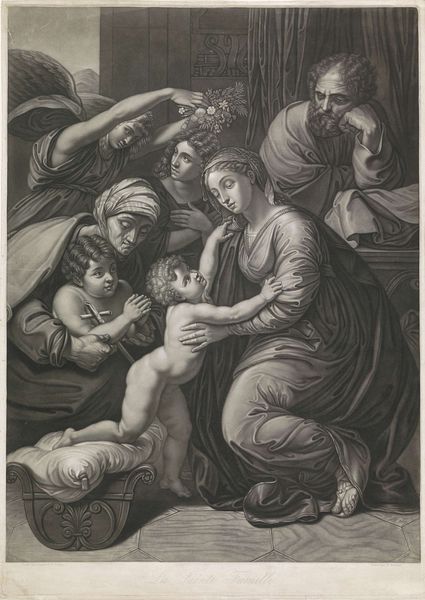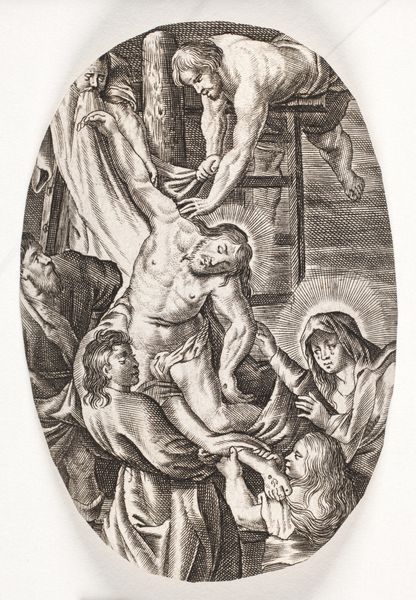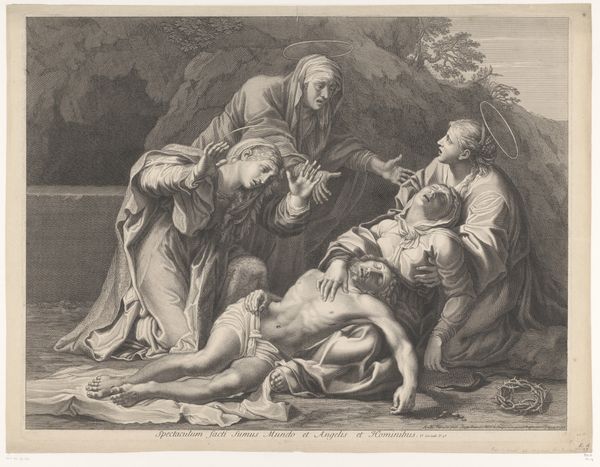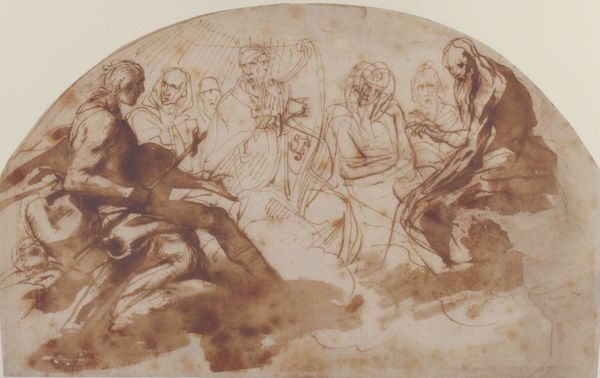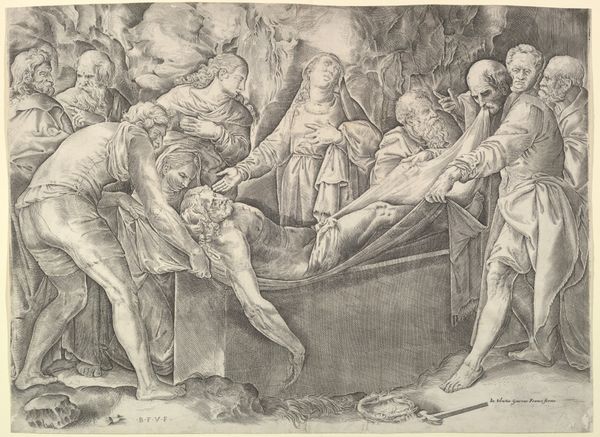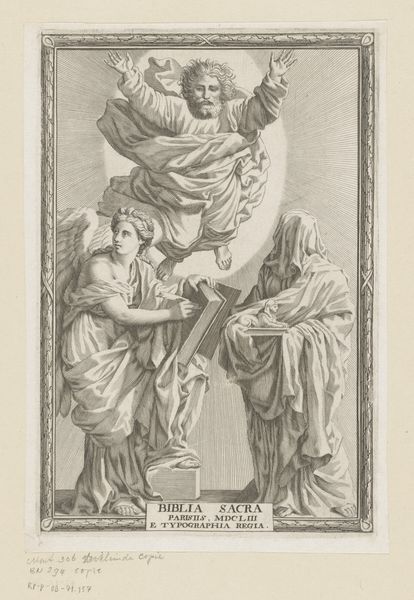
sculpture, marble, pendant
#
figuration
#
sculpture
#
decorative-art
#
marble
#
italian-renaissance
#
virgin-mary
#
pendant
#
christ
Dimensions: Overall: 40 1/2 × 67 3/8 in. (102.9 × 171.1 cm)
Copyright: Public Domain
This glazed terracotta sculpture of the Pietà was made in Florence, Italy around the turn of the 16th century by the workshop of Andrea della Robbia. The scene depicts the Virgin Mary mourning over the body of Jesus Christ, flanked by Mary Magdalene and another supporter. The sculpture is a powerful example of Renaissance religious art, which sought to create moving and relatable images for worshippers, often commissioned by wealthy patrons for private devotion or public display in churches. Della Robbia’s use of terracotta allowed for the production of affordable, yet visually stunning devotional works. The artistic conventions seen in ‘Pietà’ were shaped by the needs of the Catholic Church, and its use of visual imagery to inspire faith and piety. To understand the Pietà more fully, we can look at its historical, religious, and institutional contexts. Examining patronage records, religious treatises, and workshop practices sheds light on the artwork’s meaning as a product of its time. By studying these sources, we can better understand the function and impact of religious art in Renaissance society.
Comments
No comments
Be the first to comment and join the conversation on the ultimate creative platform.
